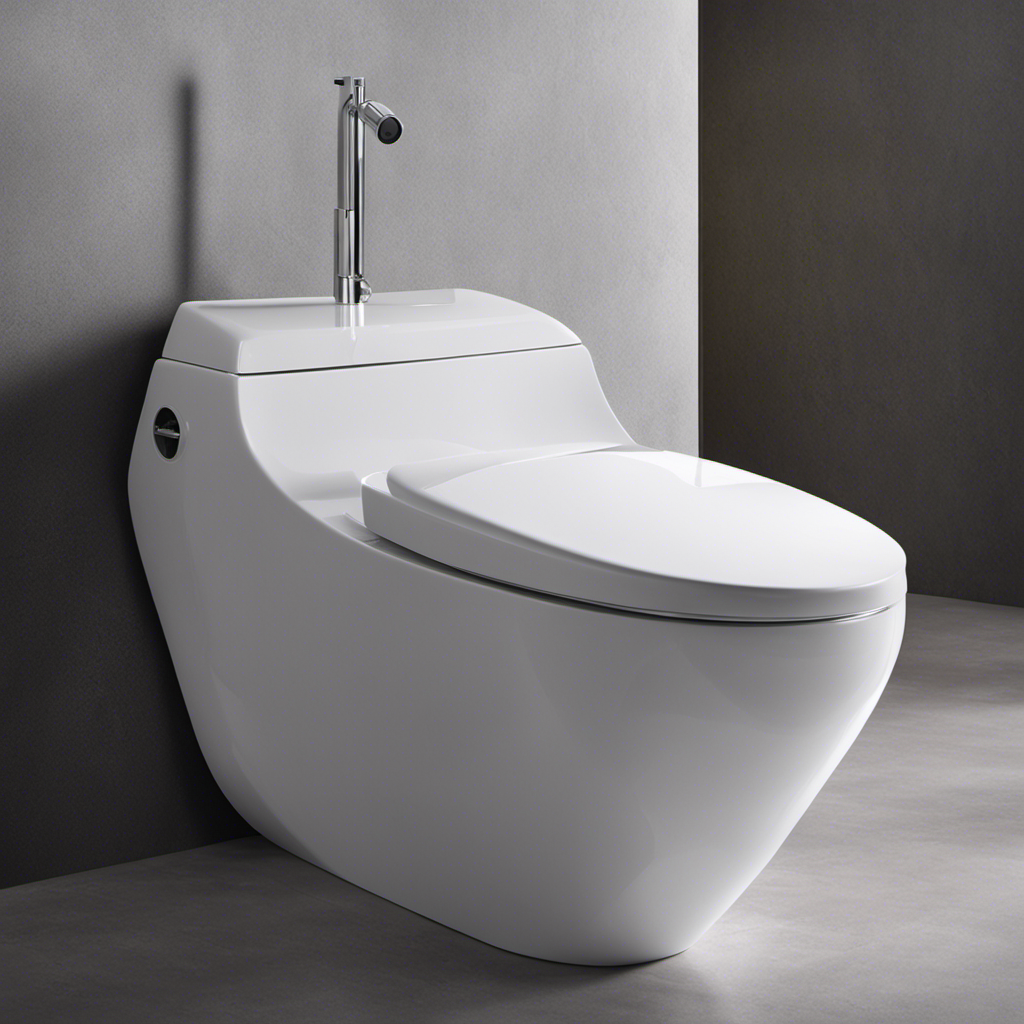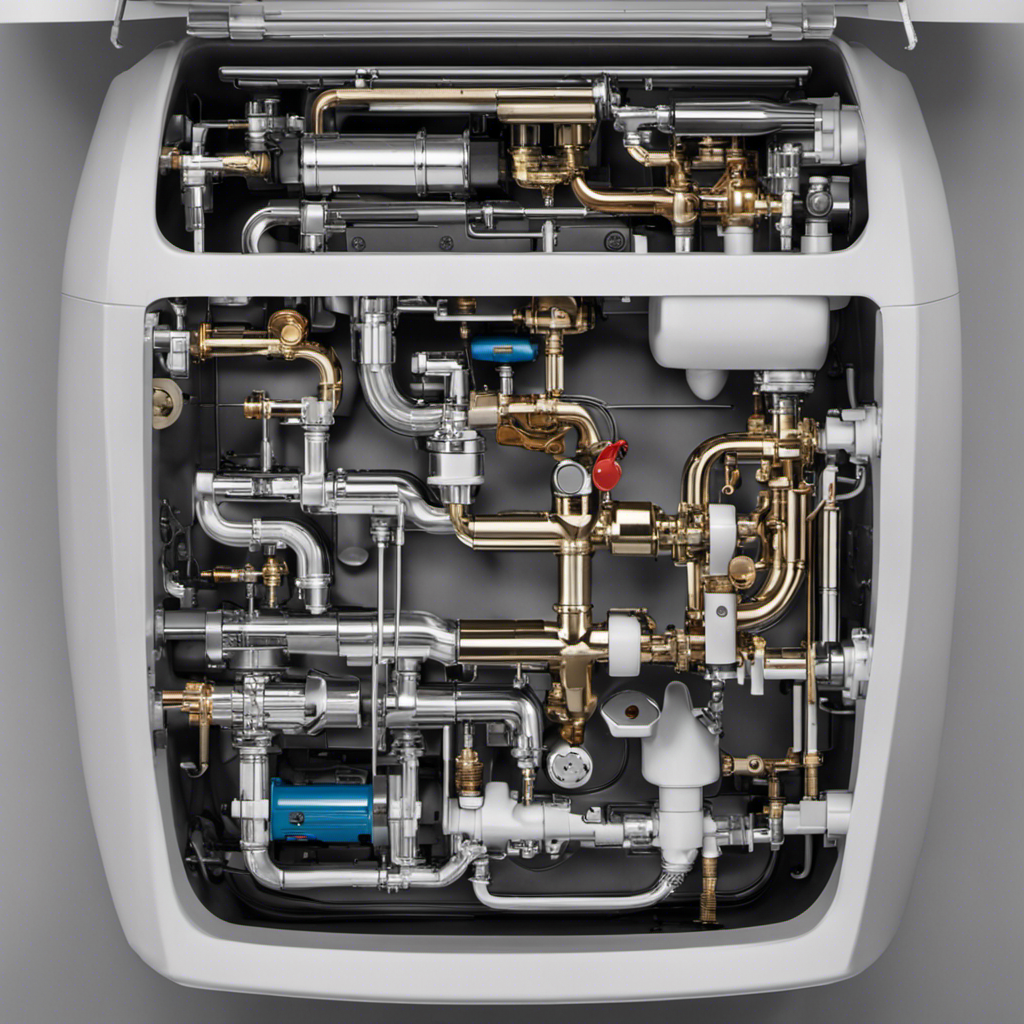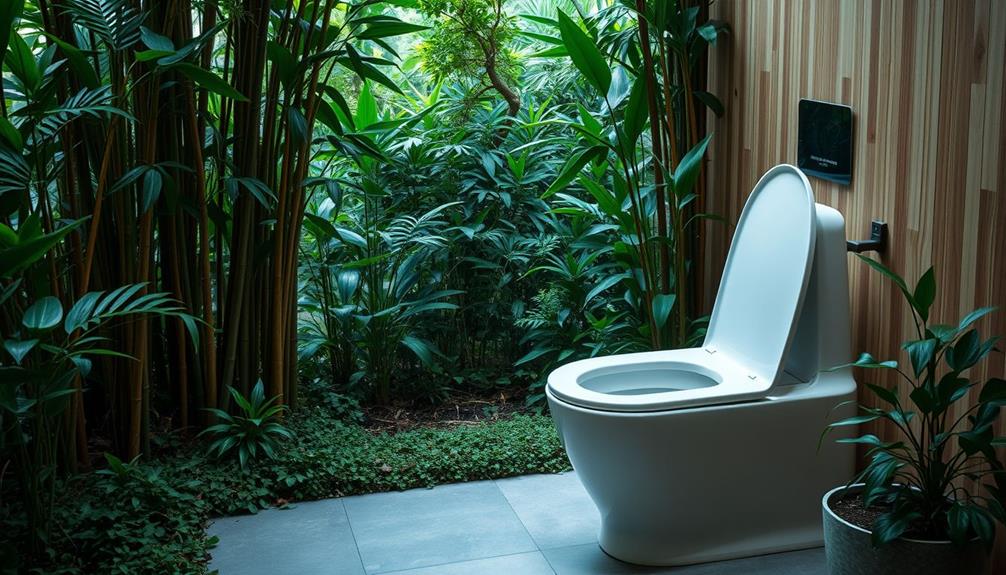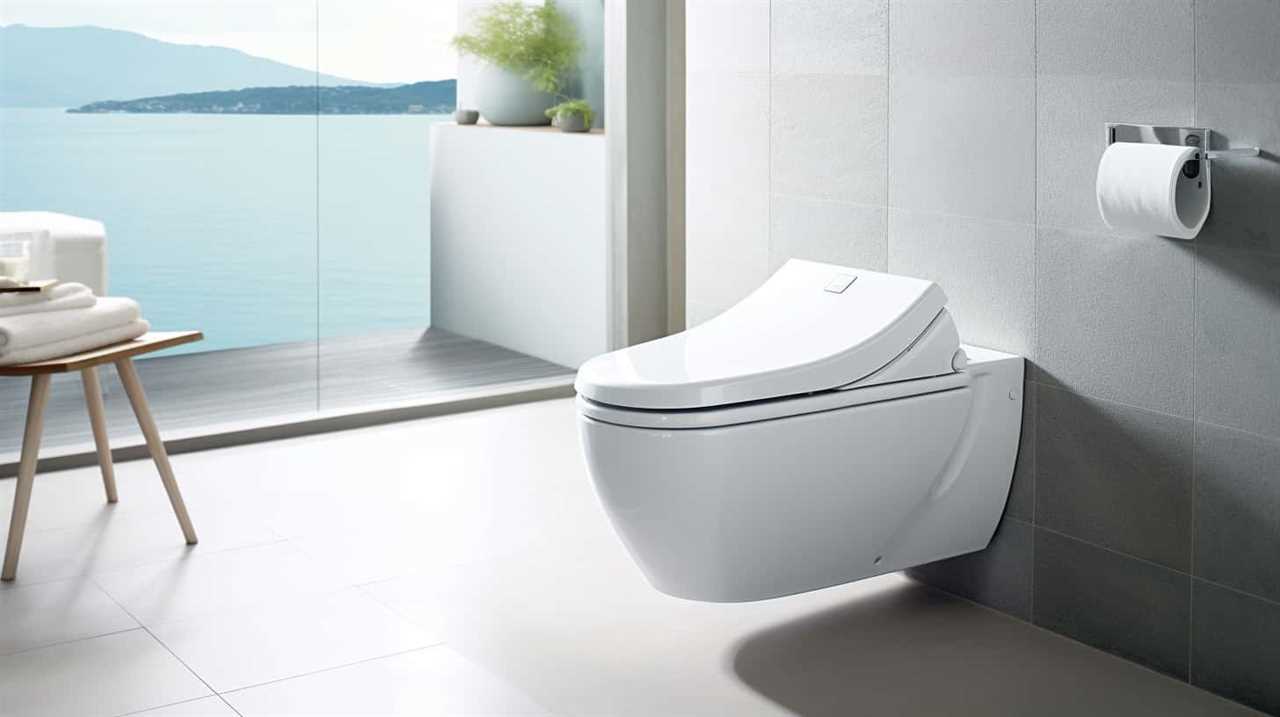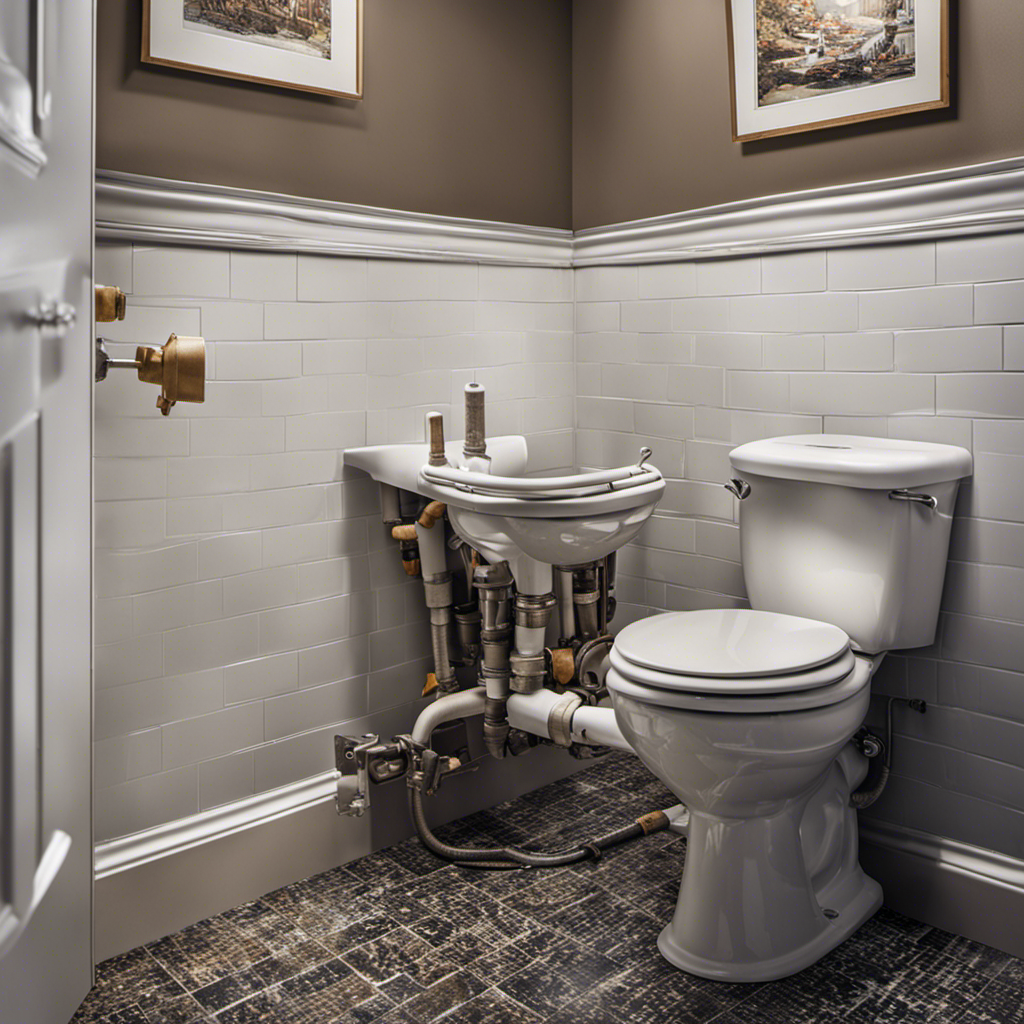Did you know that maintaining the right water level in your toilet tank is essential for optimal performance?
As a homeowner, I understand the frustration of dealing with a constantly running toilet or weak flush.
In this article, I will share valuable insights on how high the water should be in your toilet tank and provide step-by-step instructions on adjusting it.
By following these tips, you can avoid common problems and enjoy the benefits of a properly functioning toilet.
Key Takeaways
- The optimal water level in the toilet tank should be around 1 inch below the overflow tube.
- Maintaining the right water level is crucial for water conservation and efficient flushing.
- Addressing factors such as float adjustment, water supply, and flapper seal helps maintain the appropriate water level.
- Maintaining the correct water level in the toilet tank improves flushing efficiency, prevents damages, and contributes to water conservation efforts.
Optimal Water Level for Toilet Tank
The optimal water level in the toilet tank should be around 1 inch below the overflow tube. Maintaining this water level is crucial for both water conservation strategies and the efficient flushing of the toilet.
When the water level is too high, it can lead to unnecessary water wastage with each flush. On the other hand, if the water level is too low, it can affect the flushing power and effectiveness.
By keeping the water level at the recommended height, you can ensure efficient flushing while also conserving water. This is especially important in regions where water scarcity is a concern.
Additionally, maintaining the optimal water level can prevent any potential overflow issues and help in preventing water damage.
Factors Affecting Water Level in Toilet Tank
Make sure you consider all the factors that can affect the level of water in your toilet tank. Maintaining the correct water level is essential for the proper functioning of your toilet. Here are three key factors to keep in mind:
-
Float Adjustment: The float mechanism is responsible for regulating the water level. If it is set too high, it can cause constant running or overflowing. If it is set too low, it may not allow enough water to fill the tank properly.
-
Water Supply: Ensure that the water supply to the toilet tank is adequate. A malfunctioning fill valve or a partially closed shut-off valve can result in insufficient water entering the tank.
-
Flapper Seal: A worn-out or improperly sealed flapper can lead to water leakage, causing the tank to constantly refill and affecting the water level.
By addressing these factors, you can troubleshoot and maintain the appropriate water level in your toilet tank.
Now, let’s move on to how to adjust the water level in the toilet tank.
How to Adjust the Water Level in Toilet Tank
To adjust the water level in your toilet tank, start by checking the float mechanism and ensuring it is properly adjusted.
Troubleshooting a low water level in the toilet tank can be done by following a few simple steps.
First, locate the float, which is usually attached to a rod or arm inside the tank. Adjust the float by bending the arm or moving the clip up or down. This will determine the water level in the tank.
If the water level is still low, check the water supply valve to make sure it is fully open. Additionally, you can try cleaning any debris or sediment that may be blocking the water inlet valve.
Common Problems With Incorrect Water Level in Toilet Tank
If you’re experiencing issues with the water level in your toilet tank, a common problem could be a misadjusted float mechanism.
When the water level is too low in the tank, it can lead to several consequences:
-
Inadequate flushing power: Low water levels can result in weak and ineffective flushes, leaving behind waste and causing unpleasant odors.
-
Increased risk of clogs: Insufficient water can make it easier for debris to get stuck in the pipes, leading to frequent clogging issues.
-
Damaged flapper valve: A low water level can cause the flapper valve to close too quickly, resulting in premature wear and tear.
On the other hand, if you’re dealing with a high water level in your toilet tank, troubleshooting can help avoid potential problems like water overflowing, which could cause water damage to your bathroom floor or even the ceiling below.
It’s essential to address these issues promptly to ensure the proper functioning of your toilet.
Benefits of Maintaining the Right Water Level in Toilet Tank
Ensuring the correct water level in my toilet tank has numerous benefits, including improved flushing efficiency and reduced risk of potential damages.
Maintaining the right water level is not only important for the proper functioning of the toilet, but it also contributes to water conservation efforts. By keeping the water level at the recommended height, I can optimize the amount of water used during each flush, reducing wastage and saving valuable resources.
Additionally, a correctly filled tank ensures that the flush mechanism operates efficiently, preventing clogs and blockages. This not only saves me from the inconvenience of a malfunctioning toilet but also reduces the need for costly repairs.
Frequently Asked Questions
How Often Should I Check the Water Level in My Toilet Tank?
I check the water level in my toilet tank regularly to ensure it’s not too low. If the water level is too low, it can affect the flushing power. Adjusting the water level is important for optimal performance.
Can the Water Level in the Toilet Tank Affect the Flushing Power?
The water level in the toilet tank can impact the flushing power, toilet bowl cleanliness, and the likelihood of clogs. It is important to maintain the correct water level for optimal performance and functionality.
Will Adjusting the Water Level in the Toilet Tank Help Save Water?
Adjusting the water level in the toilet tank can help save water. By lowering the water level, you can reduce unnecessary water usage and lower your water bill. It’s a simple adjustment that makes a big impact.
What Could Be Causing the Water Level in the Toilet Tank to Continuously Rise?
There are several causes for the continuous rise of water level in the toilet tank. Troubleshooting may involve checking the fill valve, float, or flapper. It’s important to address this issue to prevent water waste and potential damage.
Are There Any Safety Concerns Associated With Maintaining the Water Level in the Toilet Tank?
There are safety concerns associated with maintaining the water level in the toilet tank. It’s important to regularly check and adjust the water level to prevent overflow and potential water damage.
Conclusion
In conclusion, maintaining the right water level in your toilet tank is absolutely crucial for a smooth and efficient flushing experience. It can make or break your bathroom routine!
With the perfect water level, you’ll never have to worry about clogs, weak flushes, or embarrassing toilet mishaps. So, don’t underestimate the importance of this seemingly small detail.
Take the time to adjust and maintain the water level in your toilet tank, and you’ll be rewarded with a hassle-free and satisfying bathroom experience every single time. Trust me, it’s life-changing!
